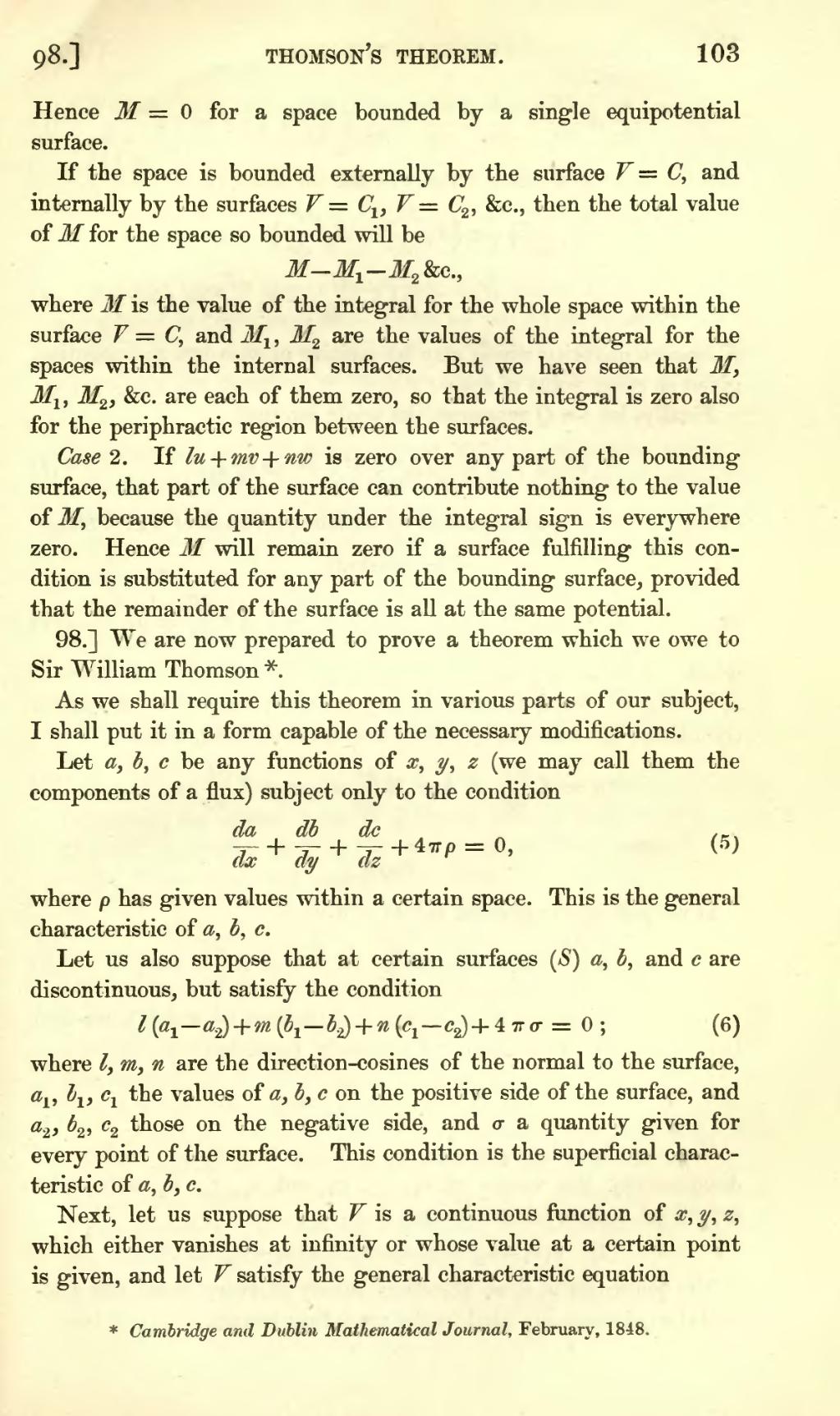Hence for a space bounded by a single equipotential surface.
If the space is bounded externally by the surface V = C, and internally by the surfaces , , &c., then the total value of for the space so bounded will be
&c.,
where is the value of the integral for the whole space within the surface , and &c. are the values of the integral for the spaces within the internal surfaces. But we have seen that , &c. are each of them zero, so that the integral is zero also for the periphractic region between the surfaces.
Case 2. If is zero over any part of the bounding surface, that part of the surface can contribute nothing to the value of , because the quantity under the integral sign is everywhere zero. Hence will remain zero if a surface fulfilling this con dition is substituted for any part of the bounding surface, provided that the remainder of the surface is all at the same potential.
98.] We are now prepared to prove a theorem which we owe to Sir William Thomson [1].
As we shall require this theorem in various parts of our subject, I shall put it in a form capable of the necessary modifications.
Let be any functions of (we may call them the components of a flux) subject only to the condition
|
| (5) |
where has given values within a certain space. This is the general characteristic of .
Let us also suppose that at certain surfaces (S) , and are discontinuous, but satisfy the condition
|
; | (6) |
where are the direction-cosines of the normal to the surface, the values of on the positive side of the surface, and those on the negative side, and a quantity given for every point of the surface. This condition is the superficial characteristic of .
Next, let us suppose that is a continuous function of , which either vanishes at infinity or whose value at a certain point is given, and let satisfy the general characteristic equation
- ↑ Cambridge and Dublin Mathematical Journal, February, 1848.






















